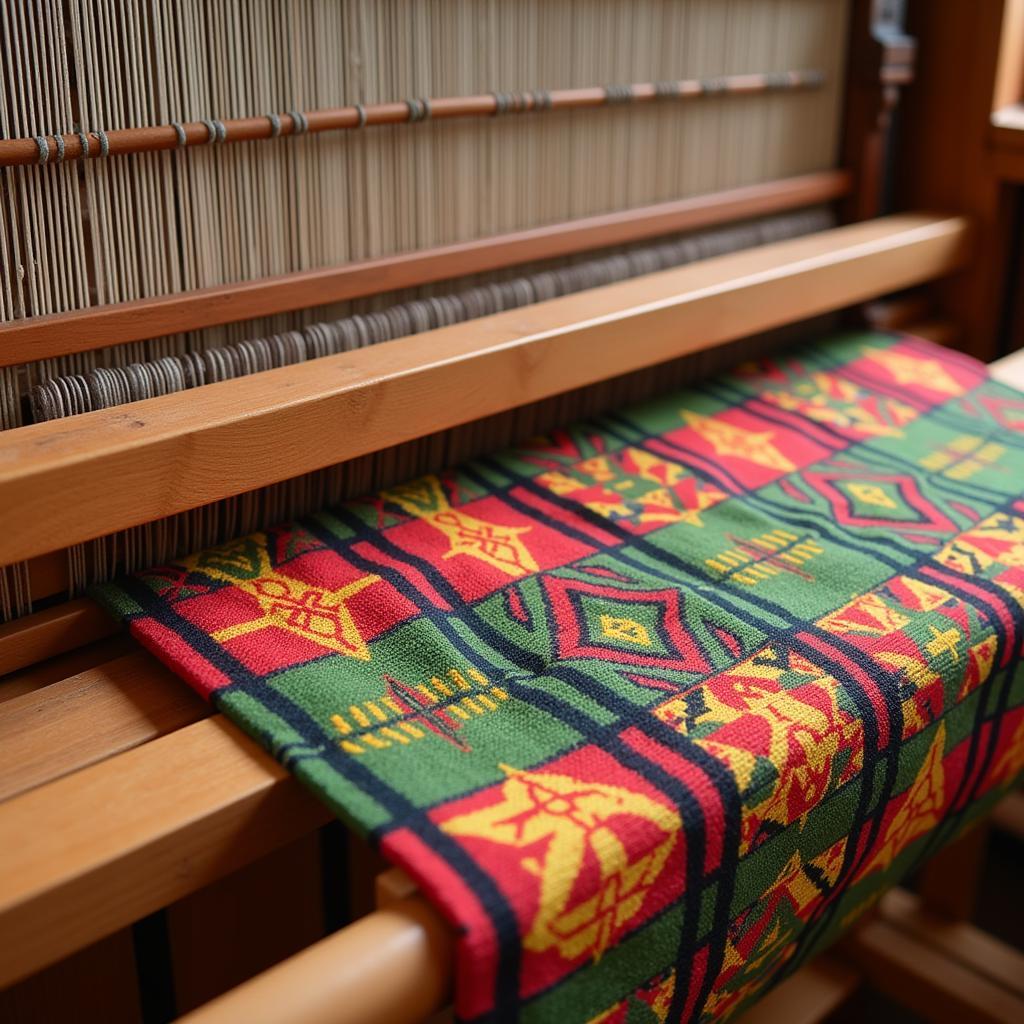African Dressing: A Colorful Tapestry of Culture and Style
African Dressing is a vibrant expression of the continent’s rich cultural heritage and diverse traditions. From the intricate beadwork of the Maasai to the flowing robes of the Tuareg, clothing in Africa transcends mere functionality, serving as a powerful symbol of identity, status, and artistry.
 African Traditional Clothing Styles
African Traditional Clothing Styles
The Significance of African Attire
Across the vast expanse of Africa, clothing plays a pivotal role in social interactions and cultural ceremonies. More than just covering the body, traditional garments often convey a person’s ethnicity, social standing, marital status, and even religious beliefs. Intricate patterns, vibrant colors, and unique designs serve as visual narratives, reflecting the history, beliefs, and values of different communities.
 West African Kente Cloth
West African Kente Cloth
For example, the brightly colored kente cloth of Ghana, with its geometric patterns and symbolic motifs, has long been associated with royalty and prestige. Similarly, the Ndebele people of South Africa are renowned for their elaborate beadwork, which adorns everything from clothing to intricate jewelry. Each piece tells a story, reflecting the wearer’s life experiences and cultural heritage.
Influences and Evolution of Style
While deeply rooted in tradition, African dressing has also been influenced by historical events, globalization, and contemporary trends. The arrival of European colonialism, for instance, introduced new fabrics and tailoring techniques, leading to the fusion of traditional styles with Western influences.
Today, modern African fashion designers are making waves on the international stage, reinterpreting traditional garments and textiles with a contemporary flair. They are drawing inspiration from their cultural heritage while incorporating modern silhouettes, sustainable materials, and innovative designs, creating a unique and dynamic fashion landscape.
Popular Styles and Regional Variations
African dressing encompasses a breathtaking array of styles, each region boasting its own distinctive aesthetics and traditions:
- West Africa: Known for vibrant colors, bold patterns, and flowing silhouettes. Kente cloth, boubou robes, and dashiki shirts are iconic examples.
- East Africa: Characterized by a more minimalist aesthetic, with emphasis on draping and the use of natural fabrics like cotton and linen. The kanga, a colorful rectangular cloth, is a staple garment.
- Southern Africa: Home to diverse cultures with unique clothing traditions. The Ndebele people are famed for their elaborate beadwork, while the Xhosa people are known for their intricate embroidery and use of animal hides.
- North Africa: Influenced by Arabic and Berber traditions, featuring flowing robes, headscarves, and intricate embroidery. The djellaba, a long, loose-fitting robe, is a common garment.
 North African Djellaba Robes
North African Djellaba Robes
Embracing African Dressing Today
The beauty of African dressing lies in its ability to seamlessly blend tradition with modernity, creating a vibrant tapestry of cultural expression. Whether it’s incorporating traditional fabrics into everyday wear, supporting local African designers, or simply appreciating the artistry and craftsmanship of African garments, there are countless ways to celebrate the beauty and diversity of African dressing.
FAQs about African Dressing
1. What is the most popular fabric used in African clothing?
Cotton is widely used across the continent due to its breathability and versatility. Other common fabrics include silk, linen, barkcloth, and animal hides.
2. Are there specific colors or patterns that hold cultural significance?
Yes, colors and patterns often carry deep symbolism. For instance, red can represent power or vitality, while gold may signify wealth or royalty. Geometric patterns can represent specific clans or beliefs.
3. Where can I find authentic African clothing and accessories?
You can find a wide selection online, at African markets, or from local artisans. Be sure to research the seller to ensure authenticity and ethical sourcing practices.
4. Is it appropriate for people outside of Africa to wear African clothing?
It’s important to approach cultural appreciation with respect and sensitivity. Wearing traditional garments with understanding and avoiding cultural appropriation is crucial.
5. How can I learn more about specific African dressing traditions?
Research online resources, visit museums, or connect with cultural organizations to deepen your knowledge and appreciation for the diverse world of African dressing.
Explore More about African Culture
Interested in delving deeper into the fascinating world of African culture? Check out these related articles:
We encourage you to continue your journey of discovery and embrace the rich heritage and vibrant expressions of African Life. Contact us at +255768904061, [email protected], or visit us in Mbarali DC Mawindi, Kangaga, Tanzania. Our team is available 24/7 to assist you.

